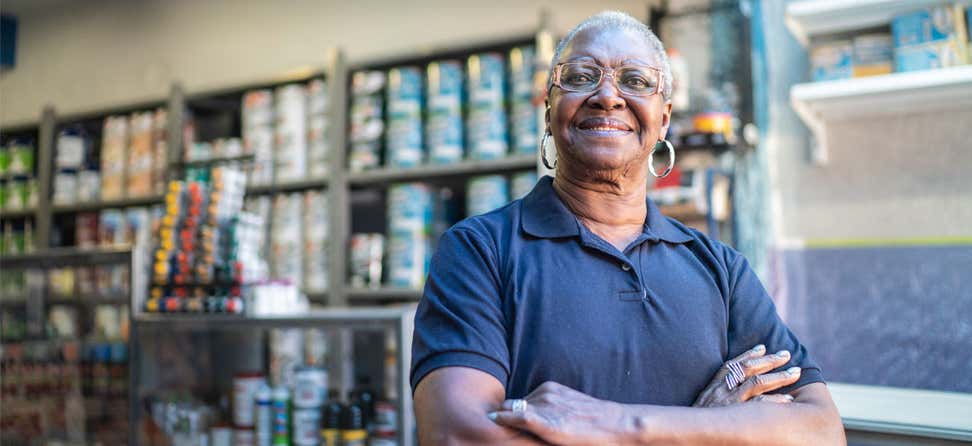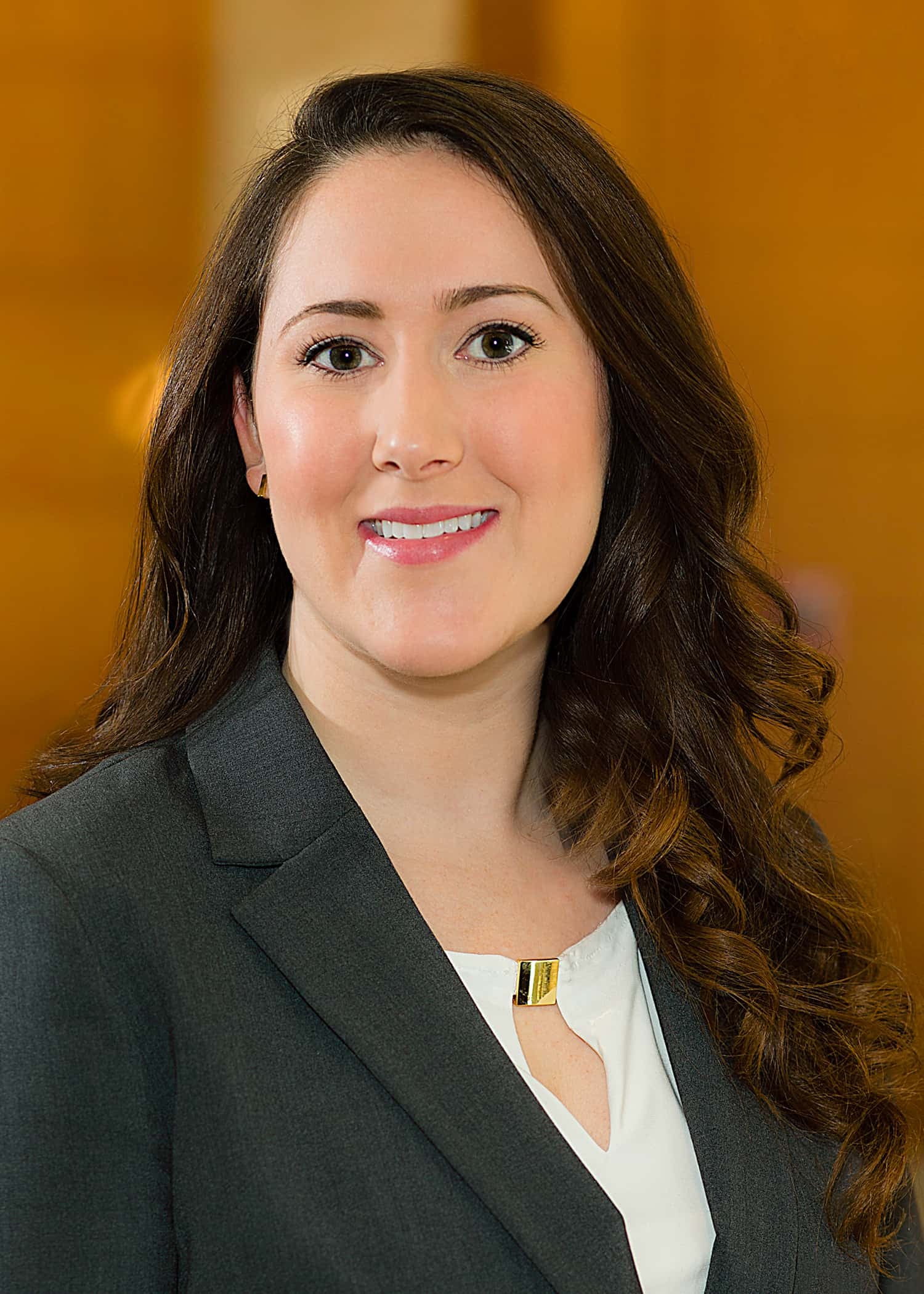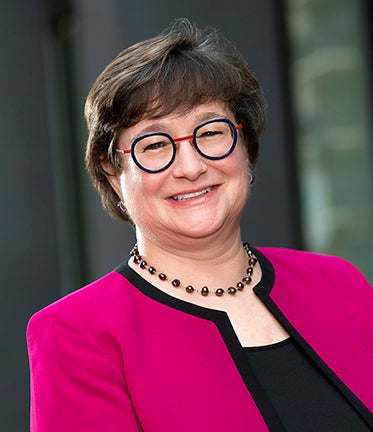Key Takeaways
NCOA partnered with Social Policy Research Associates (SPR) to design and conduct a research study aimed at understanding how enrolling in public benefit programs impacts wellbeing outcomes in older adults.
Older adults who increase their participation in public benefit programs experience modest increases in wellbeing and large reductions in food insecurity.
Black/African American, women, and older age groups were among those who experienced the greatest increases in wellbeing after enrolling in additional benefits.
There are many public benefits available to the more than 4.9 million adults age 65 and older who live below the poverty level and the other 2.6 million who are "near-poor." Some of the core benefits include the:
- Supplemental Nutrition Assistance Program (SNAP), which helps low-income families afford food
- Medicare Savings Programs (MSP), which helps low-income Medicare beneficiaries afford premiums and cost-sharing
- Part D Low-Income Subsidy/Extra Help (LIS), which helps low-income older adults afford their prescription medicines.
Benefits play a critical role in helping financially struggling older adults afford necessities such as food, healthcare, and medicine. Previous research finds that SNAP reduces food insecurity, reduces depression, increases prescription adherence, and leads to better nutritional outcomes and lower healthcare costs. Less is known about the psychological impact of receiving benefits on the individuals who receive them.
Our study sought to understand whether benefits have a positive impact on wellbeing outcomes in older adults. We define wellbeing as quality of life which includes physical, psychological, and social aspects of functioning.
Research Methodology
NCOA partnered with Social Policy Research Associates (SPR) to design and conduct a research study aimed at understanding how enrolling in public benefit programs impacts wellbeing outcomes in older adults.
Older adults were recruited from the clients served by seven different Benefits Enrollment Centers (BECs), which were selected for their diversity in both client race/ethnicity and geographic location. Older adult BEC clients were recruited at the time they were seeking assistance with enrolling in a benefits program for which they were likely to qualify.
Participants were asked to complete a baseline survey after receiving assistance from BECs to enroll in benefits. Approximately six months later, the same participants were asked again to complete the survey. The purpose was to capture differences in wellbeing outcomes between the moment of applying for benefit(s) and a later point in time that would be similar across study participants.
Surveys were administered either by telephone or mail. Respondents received small gift card incentives for their participation. There were 299 older adults who participated at baseline, a 70% response rate. Of the original 299 who completed the baseline survey, 209 completed the follow-up survey, a 70% response rate. Follow-up data collection occurred in summer 2020 during the COVID-19 pandemic, which may have had an impact on wellbeing.
The respondent characteristics at baseline are as follows:
- 69% women
- 25% age 50-64, 48% age 65-75, 18% age 75-84, and 9% age 85+
- 55% white, 30% Black/African American, 7% mixed race, 5% Hispanic/Latinx, 2% American Indian/Native American, and 1% Asian
- 22% were married and 78% were either divorced, widowed, never married, or separated
Analytic Approach
Despite expectations that nearly all respondents would be enrolled in additional benefits after receiving assistance from a BEC, we found that some respondents lost their enrollment in some programs but gained enrollment in others. Using a quasi-experimental approach, respondents were divided into a “treatment” group consisting of those who became enrolled in additional benefits, and a comparison group consisting of those who were enrolled in the same number or fewer programs at follow-up. We utilized Propensity Score Matching (PSM) and difference-in-difference (DiD) analytic methods to analyze the results.
Survey Findings
Food Insecurity
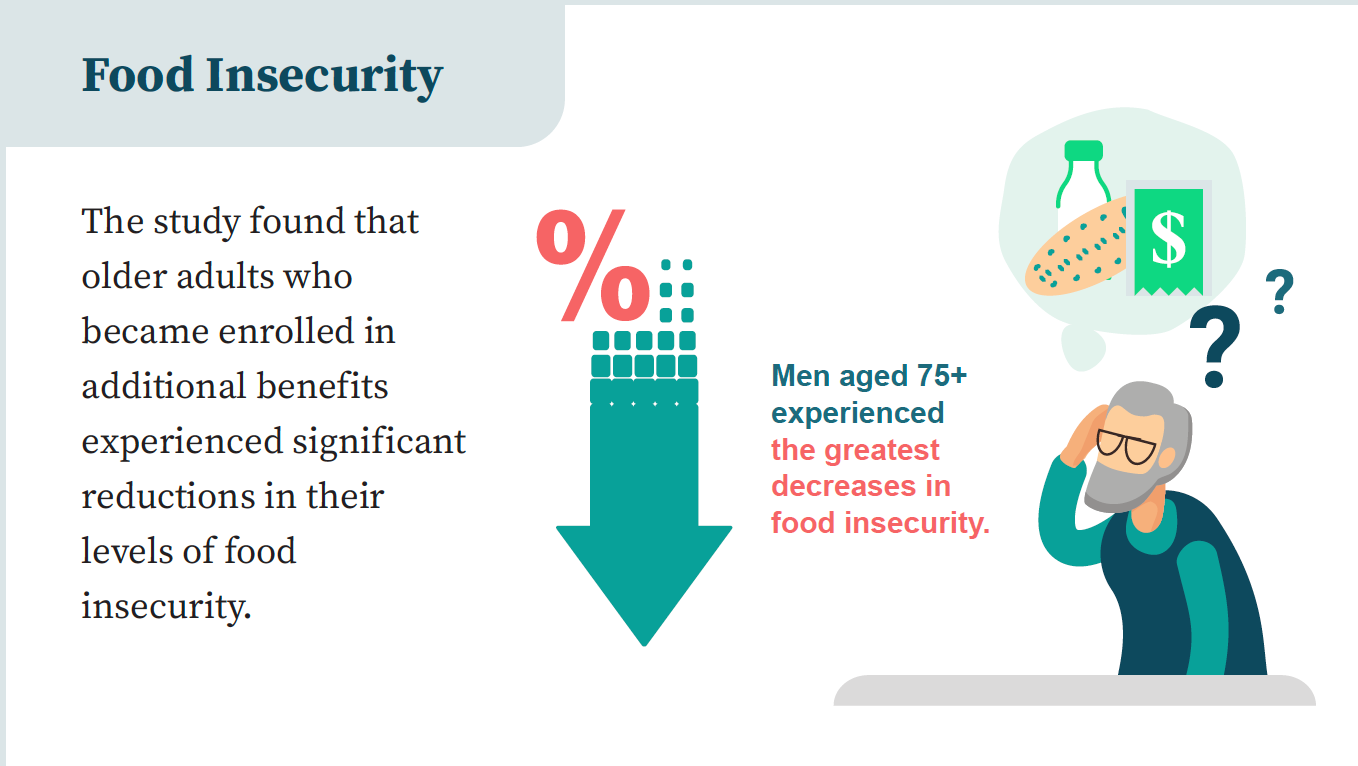
The survey included two food insecurity questions adapted from the U.S. Census Survey of Income and Program Participation (SIPP). The analysis found statistically significant evidence that older adults who became enrolled in additional benefits experienced greater reductions in food insecurity between baseline and follow-up. Subgroup analyses revealed the drops in food insecurity were greatest for men and those age 75+.
Wellbeing
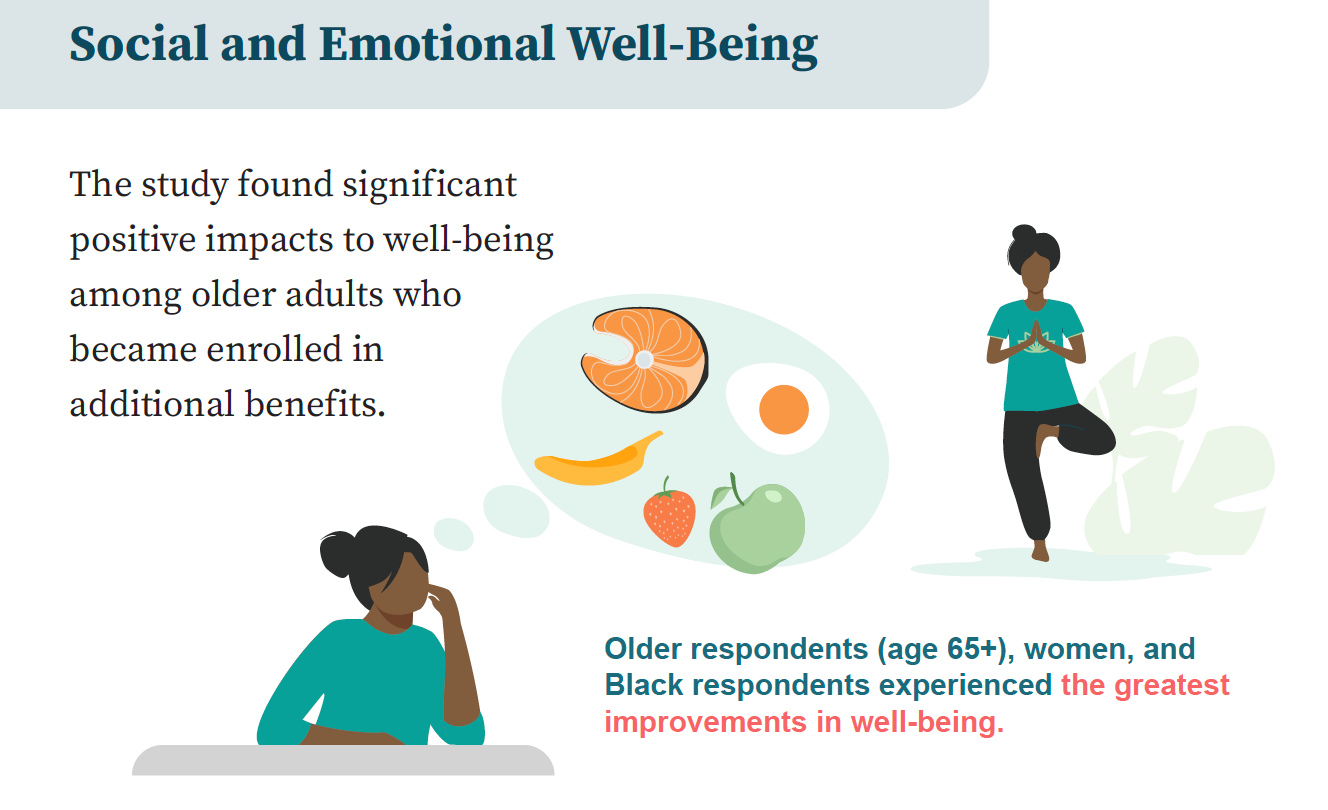
The survey included the Medical Outcomes Study Questionnaire Short Form (SF-36) Health Survey to measure changes in social, emotional, and physical wellbeing. Older adults who enrolled in additional benefits experienced modest positive impacts on their social and emotional wellbeing relative to their counterparts. Subgroup analyses revealed that women, Black/African American, and older respondents (age 65+) experienced the largest increases in wellbeing associated with being enrolled in more benefits.
We also measured financial wellbeing using the Consumer Financial Protection Bureau’s Financial Wellbeing Scale. We found that financial wellbeing increased slightly for respondents on average between baseline and follow-up, yet the “treatment” group did not experience greater increases. The subgroup analysis, however, revealed that older respondents (age 75+) and Black/African American respondents who enrolled in additional benefits experienced the greatest increases in their financial wellbeing between baseline and follow-up.
Conclusion
This study found promising evidence that participating in a larger number of public benefit programs was associated with large reductions in food insecurity and modest to moderate increases in social and emotional wellbeing for older adults. It is notable that increases in wellbeing were observed in the “treatment” group despite follow-up data collection occurring during the COVID-19 pandemic. Some of the more vulnerable groups of older adults – including women, the oldest respondents and Black/African American individuals – appeared to benefit more than other groups. Not only are benefits programs such as SNAP, MSP, and LIS important for helping low-income older adults meet their needs, there is now some evidence of the positive psychological impact of benefits on the older adults who receive them.
This research was supported in part by grant 90MINC0002-01-01 from the U.S. Administration for Community Living, Department of Health and Human Services. Points of view or opinions do not necessarily represent official ACL policy.


